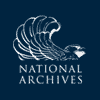David McClure to James Madison, 7 March 1815
From David McClure
Philada March 7th 1815
Sir,
I have long Since been under the impression that a Navy school would be of importance to the United States. I am happy that at length one or more have been recommended,1 and now the subject is under consideration. I presume it is well known to you that I have been the Principal of a Nautical Institution in this city for some time, and that a large proportion of Navy Officers have been under my instructions. This would in a measure apologize for my presumption in offering myself a Candidate to serve the United States as Professor of one of their Navy Schools.2
It is with a degree of independence though not altogether without modesty that I address you on this subject, for I have to state that my present encouragement both in the Mathematical and Nautical department is such as amply rewards me for my labours. My desire is to have my talents employed in a manner to produce the most general benefit, and it would be a point of ambition to serve the country that gave me birth.
As the boundery line between the United State & Great-Britain is required (according to the late Treaty) to be accurately laid down, I deem it of consequence to communicate to you an important improvment which I have lately made to an Artificial Horizon, invented some years ago for the use of my students.
This Artificial Horizon consists of four Strips of well seasoned Mahogany or Walnut about ten feet in length and six or eight inches in breadth; one edge of each to be made perfectly straight.
Those Strips make the Artif. Hor. and when in use form a square each corner of which is supported by a Stand made for the purpose.
To Adjust this Artif. Hor. there is in each Strip a gutter nearly filled with quicksilver and covered with glass so that it would be attended with no difficulty in ascertaining (by the bulb in the quicksilver and by mean of a screw in each Stand) when each ship is in the horizon. You will readily perceive that the Adjustment will correct itself; for in passing round the strips in succession if the end of the last coincides with the end of the first the adjustment will be correct and each Strip in the Horizon.
The Merits of this Artificial Horizon I have abundantly proven by innumerable astronomical observations and particularly when ascertaining the Latitude & Longitude. I have in a very imperfect manner described this invention and have deemed the bulk of a letter insufficient to prove its superiority to all others now in use. I have conversed with a gentleman of eminent talents who was educated in Europe and who is acquainted with the various improvements made there, and he states that he has not seen any Artif Hor. that satisfies his mind as well as the one described to you.
Should you feel inclined to attend to this Artif Hor, I shall esteem it a pleasure to send you a model, with the instruction how it is to be used, and some evidences of its superiority.
I should be happy to receive an answer on both subjects of this letter. I am your most obedient Servant
David McClure,
Principal of
the Naul & Mathl Academy
Philad⟨a⟩
RC (DLC). Cover docketed by JM. Damaged by removal of seal.
1. On 17 Feb. 1815 in the House of Representatives, John G. Jackson introduced, among others, a resolution that the Naval Committee “be … instructed to inquire into the expediency of establishing one or more naval academies.” After debate, the resolutions were tabled (, 13th Cong., 3d sess., 1163–65).
2. McClure’s efforts to promote the establishment of a naval academy did not bear fruit until 1839, when he was named professor of mathematics at the Asylum Naval School in Philadelphia. Instruction began in November of that year (Lloyd J. Matthews, General Henry Lockwood of Delaware: Shipmate of Melville, Co-builder of the Naval Academy, Civil War Commander [Newark, Del., 2014], 128, 154 n. 8).

![University of Virginia Press [link will open in a new window] University of Virginia Press](/lib/media/rotunda-white-on-blue.png)
